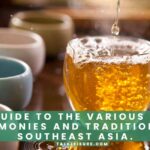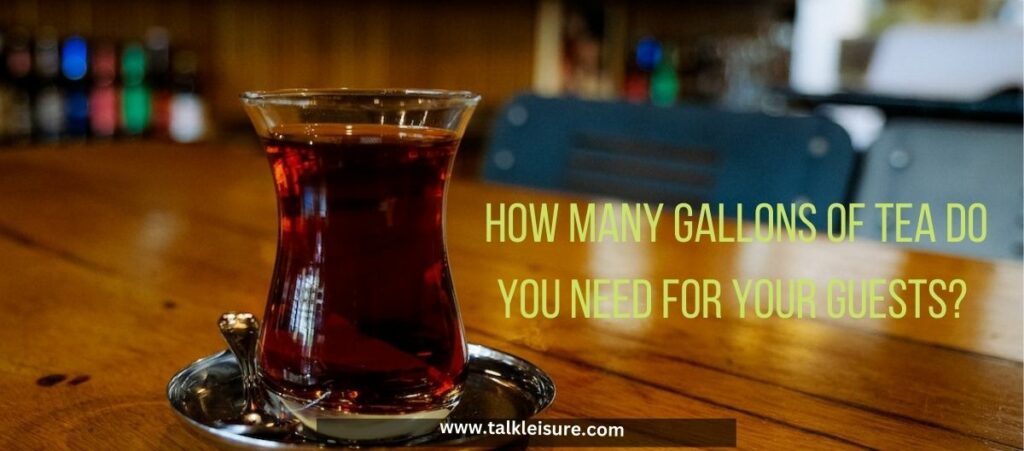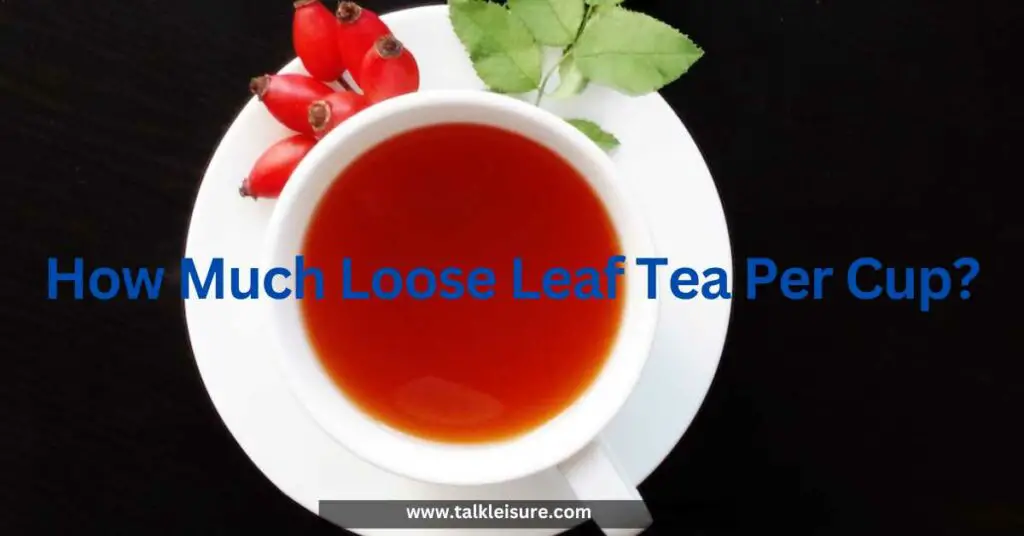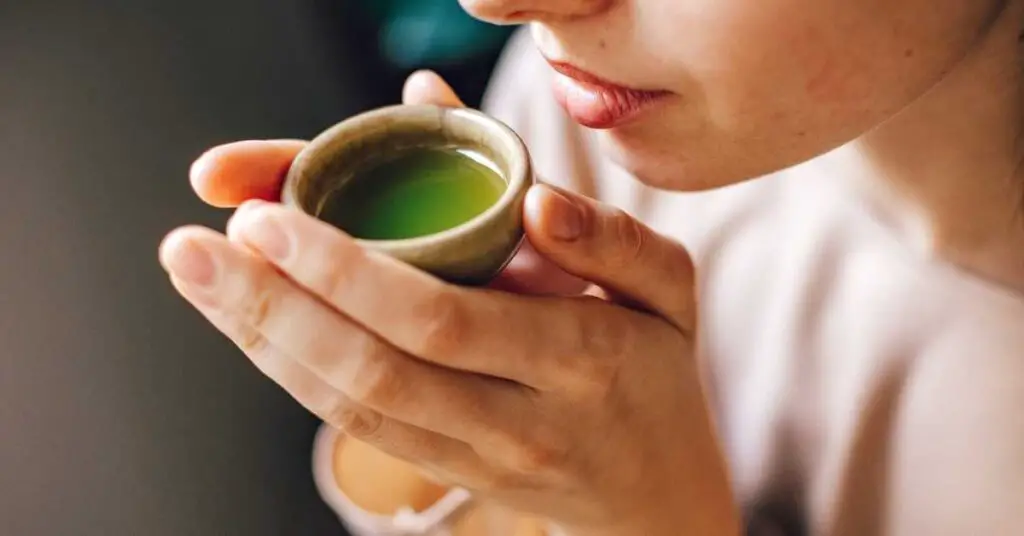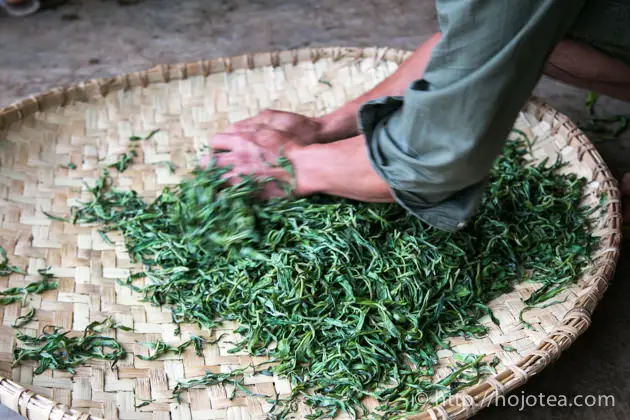Embark on a journey through time and culture, where a humble leaf transforms into a force that shapes history. In this exploration, we unveil the surprising ways tea has influenced major historical events. From ancient trade routes along the Silk Road to the pivotal role it played in revolutions and empires, tea’s impact resonates through the ages.
Tea, initially a simple beverage, became a catalyst for change. It fueled trade along the Silk Road, incited revolutions like the Boston Tea Party, and even played a role in political and cultural movements, leaving an indelible mark on major historical events worldwide.
Delve into the opulence of Victorian tea parties, the serenity of Japanese ceremonies, and the resilience of Indian independence. Join us as we unravel the rich tapestry of tea’s legacy, a testament to its enduring power in connecting nations, bridging cultures, and steeping itself in the annals of history.
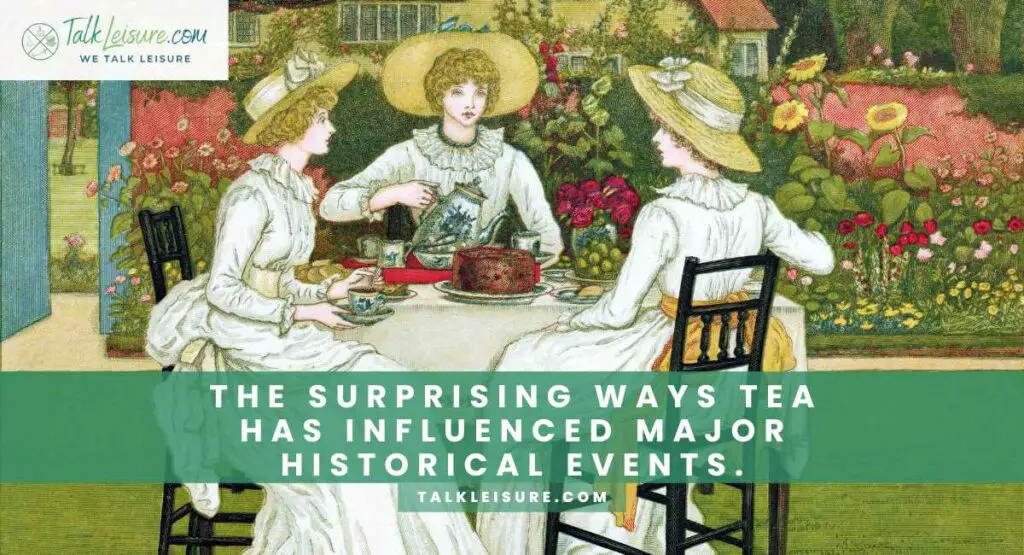
Introduction to Tea Culture and History
Hey there, fellow history and tea enthusiasts! Today, we’re embarking on a journey through time, uncovering the remarkable influence of tea on some of the biggest events in our shared past.
Imagine ancient caravans traversing the Silk Road, laden not only with precious silks and spices but also with something just as valuable: tea leaves. Yes, that’s right! Long before teabags and electric kettles, tea was already making its mark on the world.
Picture this: Chinese monks, perched high in the mountains, discovered the calming properties of this humble leaf. Little did they know that their revelations would send ripples through history, shaping trade routes, fueling conflicts, and even influencing matters of global diplomacy.
Tea wasn’t just a beverage; it was a currency of cultures, a catalyst for connection, and, at times, a cause for chaos.
So, let’s steep ourselves in the intriguing tale of how tea, from its humble beginnings, wove itself into the fabric of major historical events.
In this series of posts, we’ll traverse continents and centuries, exploring how this aromatic elixir became entangled in the grand tapestry of human history. We’ll sip our way through ancient trade routes, witness revolutions brewing, and uncover the surprising links between tea and imperialism.
So, grab your favorite cup of tea, settle in, and let’s unravel the fascinating story of how tea leaves left an indelible mark on the course of history. From the Silk Road to Boston Harbor, the journey promises to be nothing short of extraordinary.
Stay tuned for the next installment, where we’ll delve into the intriguing world of tea and the Silk Road and how it kicked off this remarkable journey through time.
Cheers to a journey steeped in history!
Tea and the Silk Road: Early Trade Routes

Alright, dear time-travelers and tea aficionados, let’s set our course for the ancient crossroads of the world: the Silk Road. This wasn’t just a dusty trail; it was a bustling highway of commerce, connecting the East to the West, and guess who had a prized spot in the caravan? That’s right, our dear friend, tea.
As merchants trekked across mountains, deserts, and vast plains, they carried with them more than just goods; they carried cultures, ideas, and, of course, those precious tea leaves. Tea wasn’t just a drink; it was a currency of exchange, a symbol of refinement, and an elixir of vitality.
Picture this: a weary traveler finding respite in a bustling Silk Road oasis. Amid diverse tongues and exotic wares, there it was – a steaming cup of tea, bridging worlds and creating common ground.
But here’s the twist: it wasn’t just about the tea itself. Alongside the leaves flowed stories of distant lands and the promise of new beginnings. Tea became a cultural ambassador, introducing Chinese traditions to far-flung corners of the globe.
As we follow this aromatic trail, we’ll uncover how tea played a pivotal role in shaping early global trade and cultural exchange. It wasn’t just a commodity; it was a bridge that brought people together, sparking conversations and forging connections that would resonate through the ages.
So, let’s raise our virtual teacups to those intrepid Silk Road travelers and the humble tea leaves that embarked on this grand adventure. In the next installment, we’ll sail across oceans to explore how tea taxation set the stage for revolutionary fervor in the New World.
Stay tuned, and keep those teapots at the ready!
The Opium Wars and the Role of Tea
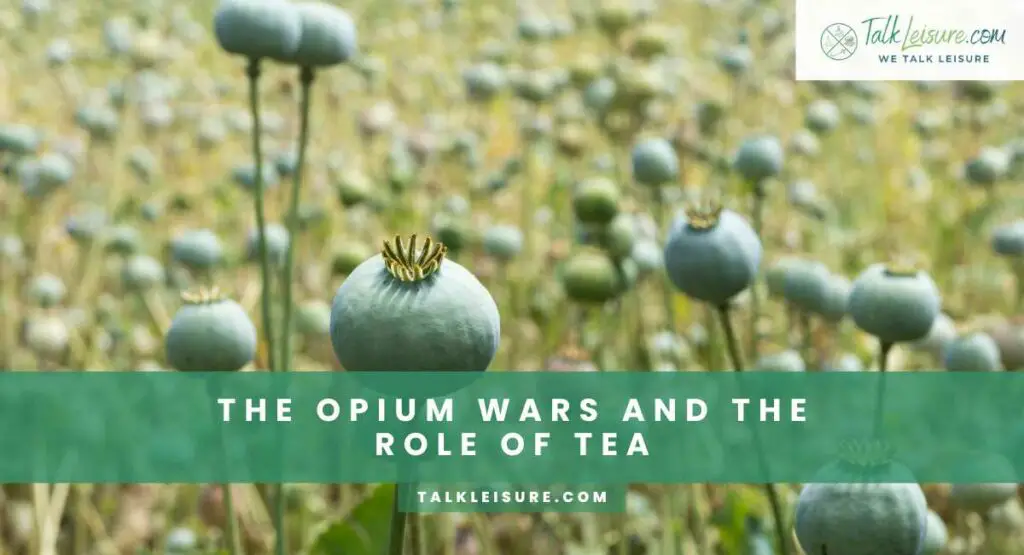
Ahoy, history buffs and tea enthusiasts! Brace yourselves, for our voyage now takes us to a tumultuous period in the 19th century, where tea and global politics clashed in a stormy sea known as the Opium Wars.
Picture this: The British Empire, fueled by a seemingly insatiable thirst for Chinese tea, found itself in a tricky predicament.
The Chinese were more interested in silver than British manufactured goods. But the British had a trump card up their sleeves: opium, a highly addictive substance. This illicit trade created a complex web of dependence and power dynamics.
As tensions brewed, tea found itself at the center of a geopolitical storm. The British, eager to secure their tea supply, resorted to questionable practices, culminating in the infamous Opium Wars. This clash of empires over trade imbalances and differing ideologies would reshape the course of history.
The Opium Wars were more than just battles; they were a clash of cultures, ideologies, and economic interests. They marked a turning point not only in tea history but also in global trade and the power dynamics between East and West.
Tea, once a symbol of serenity, became entangled in the murky waters of international politics. Its leaves bore witness to a turbulent period of history, where addiction, trade imbalances, and territorial disputes held sway.
As we reflect on this dark chapter, we’re reminded that even the most peaceful of commodities can find themselves at the heart of geopolitical storms. In our next leg of this journey, we’ll cross the Atlantic to witness how tea taxation ignited the flames of revolution in colonial America.
Stay tuned, and let’s keep sipping on this fascinating brew of history!
Tea Taxation and the American Revolution
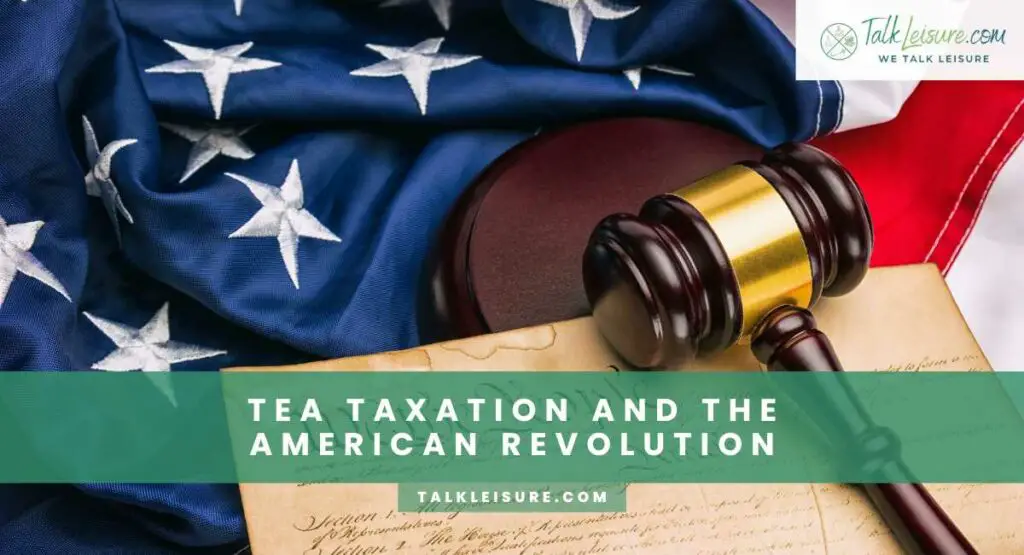
Ahoy, history buffs and tea aficionados! Prepare to embark on a journey across the Atlantic, where tea became a symbol of resistance and rebellion in the lead-up to the American Revolution.
Picture this: it’s the eve of revolution in the American colonies. Tensions between the British Crown and the colonists are at a boiling point. And at the center of it all? Tea.
The British Parliament, seeking to assert its authority and replenish its coffers, imposed the Tea Act of 1773. This act granted the British East India Company a monopoly on tea trade in the American colonies, effectively lowering the price of tea but maintaining the tax. It was a move that, to the colonists, felt like a calculated ploy to maintain control.
In response, a group of bold colonists, fueled by a fervent desire for independence, staged one of history’s most iconic protests: the Boston Tea Party. On that fateful night in 1773, chests of British tea were dumped into the harbor, sending shockwaves across the Atlantic and igniting the flames of revolution.
Tea, once a cherished beverage, had become a potent symbol of defiance. It was no longer just a matter of taste, but a matter of principle. The Tea Party rallied colonists and unified them against what they perceived as unjust taxation without representation.
As we stand on the shores of history, it’s impossible to ignore the pivotal role that tea played in the path to American independence. The Boston Tea Party was more than an act of rebellion; it was a catalyst that set the American Revolution in motion.
In the next segment of our journey, we’ll traverse the high seas to unravel the intricate relationship between tea and British imperialism. Stay tuned, and let’s keep brewing this tale of historical intrigue!
The Boston Tea Party: Catalyst for American Independence
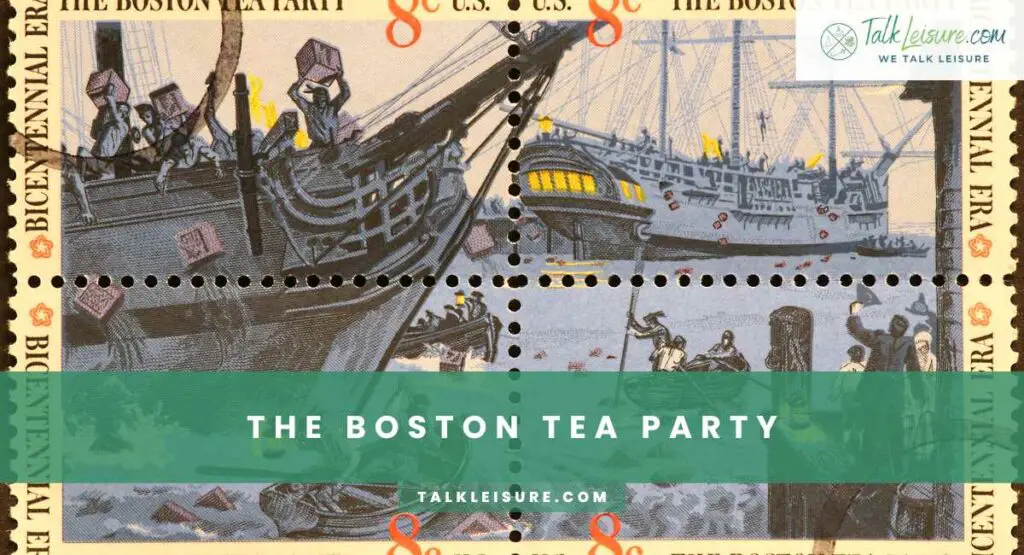
Ahoy, intrepid time-travelers and history enthusiasts! As we sail through the tempestuous waters of the American Revolution, we find ourselves at a crucial juncture: the Boston Tea Party.
Picture it: Boston Harbor, December 16, 1773. A moonlit night shrouded in secrecy, a group of patriots, their resolve unyielding, don disguises and board British ships laden with crates of tea. What transpires next is nothing short of revolutionary.
In an act of defiance that reverberates through the ages, they heave chest after chest of precious cargo overboard, sending them plummeting into the cold, dark waters. The message is crystal clear: no taxation without representation.
The Boston Tea Party wasn’t just an act of rebellion; it was a seismic shift in the fight for American independence. It galvanized colonists from all walks of life, uniting them under a common cause. Tea, once a source of comfort and communion, had become a powerful tool of protest.
This audacious act drew a line in the sand, setting the stage for a full-blown revolution against British rule. It was a spark that ignited the flames of liberty, propelling the American colonies towards their destiny as an independent nation.
As we stand on the deck of history, gazing back at that moonlit night, we’re reminded that sometimes it takes an act of extraordinary courage to change the course of history. The Boston Tea Party was one such moment—a beacon of defiance that lit the way towards American freedom.
In our next leg of this journey, we’ll set our sights on the vast British Empire and explore how tea played a pivotal role in their imperial pursuits. Stay tuned, and let’s keep steeping ourselves in this tapestry of historical marvels!
The Role of Tea in British Imperialism
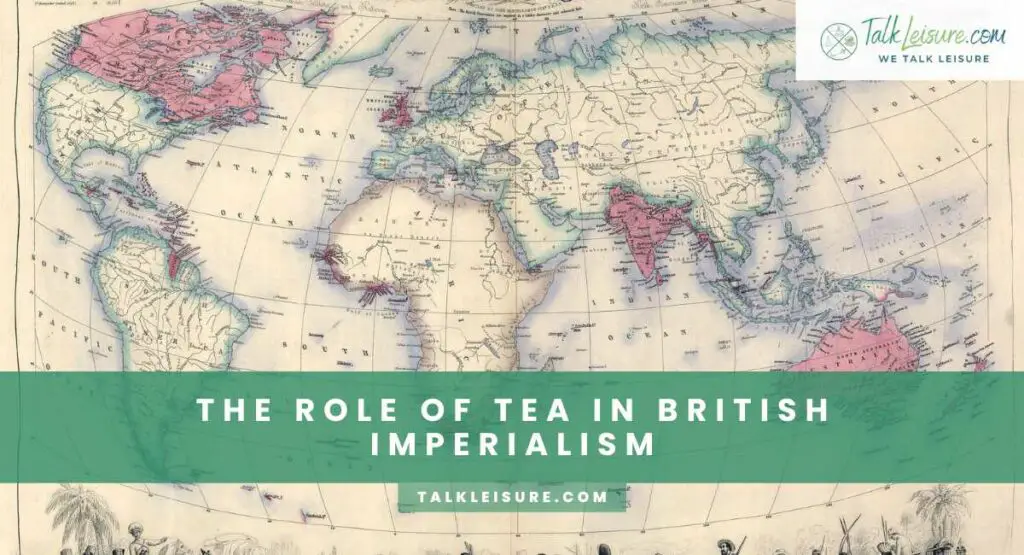
Greetings, fellow time travelers and history enthusiasts! As our voyage through time continues, we now set our course for the heart of the British Empire, where tea played a central role in the grand tapestry of imperialism.
Picture this: Victorian England was an era of opulence and ambition. Tea, once a luxury of the elite, has now permeated every echelon of society. It was no longer just a beverage; it was a symbol of refinement, an essential ritual of daily life.
The British Empire, in its quest for dominion over far-flung lands, found tea to be a potent tool of influence. It became a bridge, a gesture of diplomacy, and a means of asserting cultural superiority. The afternoon tea ceremony became a hallmark of British society, a display of sophistication and grace.
But here’s the twist: behind the porcelain teacups and elegant rituals lay a complex web of power dynamics. The opulent tea parties in London were intimately connected to the sprawling tea plantations in India, Sri Lanka, and Africa. The demand for tea fueled a relentless pursuit of resources and territories, often at the expense of indigenous cultures.
Tea estates became microcosms of the British Empire, with their own hierarchies and labor systems. The story of tea, once rooted in the misty hills of China, now sprawls across continents, leaving an indelible mark on the landscapes and cultures it touches.
As we navigate this chapter of history, we’re reminded that the legacy of tea extends far beyond the teapot. It’s a story of empire-building, of cultures colliding, and of a humble leaf’s transformation into a global phenomenon.
In our next segment, we’ll journey to the East, where we’ll uncover the intricate relationship between tea and Chinese culture and how it shaped the course of history. Stay tuned, and let’s continue our exploration of this remarkable brew of historical intrigue!
The Opium Trade and Its Connection to Tea in China
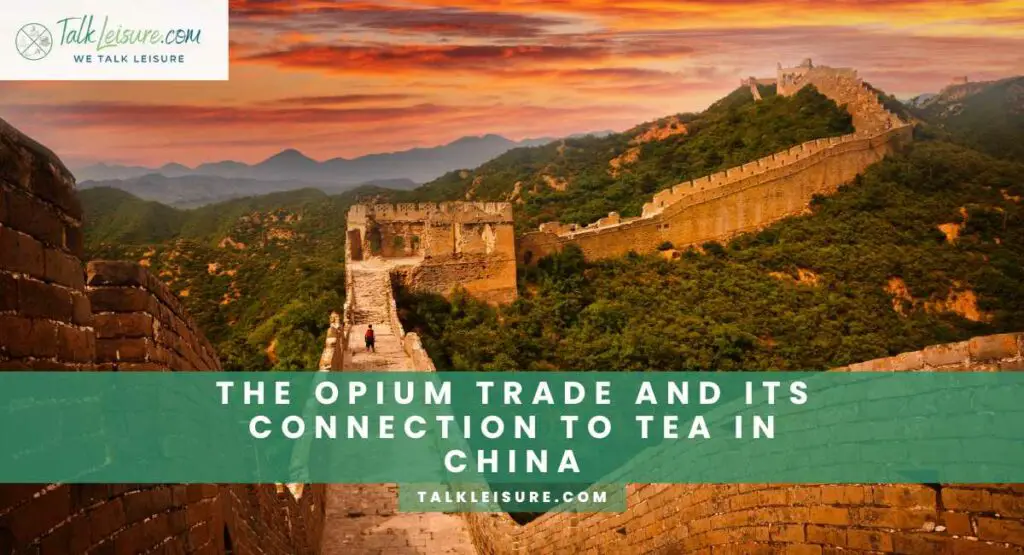
Greetings, fellow time-travelers and enthusiasts of history’s intricacies! Our journey now takes us back to the cradle of tea civilization, China, where a tangled web of trade, addiction, and geopolitics would leave an indelible mark on history.
Picture this: 18th-century China, a land of ancient traditions and towering dynasties Here, tea reigned supreme, not just as a beverage but as a cornerstone of culture and commerce. The lush hills of Fujian and Yunnan produced the world’s most coveted leaves.
Yet, in the shadow of this thriving tea trade, a sinister undercurrent was gaining momentum: the opium trade. British merchants, seeking to balance the scales of trade, flooded Chinese markets with this addictive substance.
Opium, once a niche commodity, now threatens to unravel the very fabric of Chinese society. Addiction spreads like wildfire, sowing discord and destabilizing communities. The Qing Dynasty, faced with this crisis, took drastic measures to curb the opium influx, setting the stage for conflict with the British Empire.
The Opium Wars, a series of brutal conflicts, would leave a scar on China’s history, reshaping the course of its relationship with the outside world. The treaties that followed opened Chinese ports to foreign influence and carved out spheres of influence, including in the tea-rich regions.
Tea, once a symbol of China’s cultural prowess, now bears witness to a nation in turmoil. It became entangled in a complex web of trade imbalances, addiction, and geopolitical struggles. The story of tea in China during this period is a testament to the intricate interplay of culture, commerce, and power.
As we navigate this turbulent chapter, we’re reminded that even the most cherished traditions can be swept up in the currents of history. The story of tea in China is one of resilience, adaptation, and ultimately, a testament to the enduring power of this humble leaf.
In our next installment, we’ll journey to the Victorian era, where we’ll explore how tea became a symbol of respectability and ritual in 19th-century England. Stay tuned, and let’s continue our exploration of tea’s surprising influence on the world stage!
Tea in the Victorian Era: A Symbol of Respectability
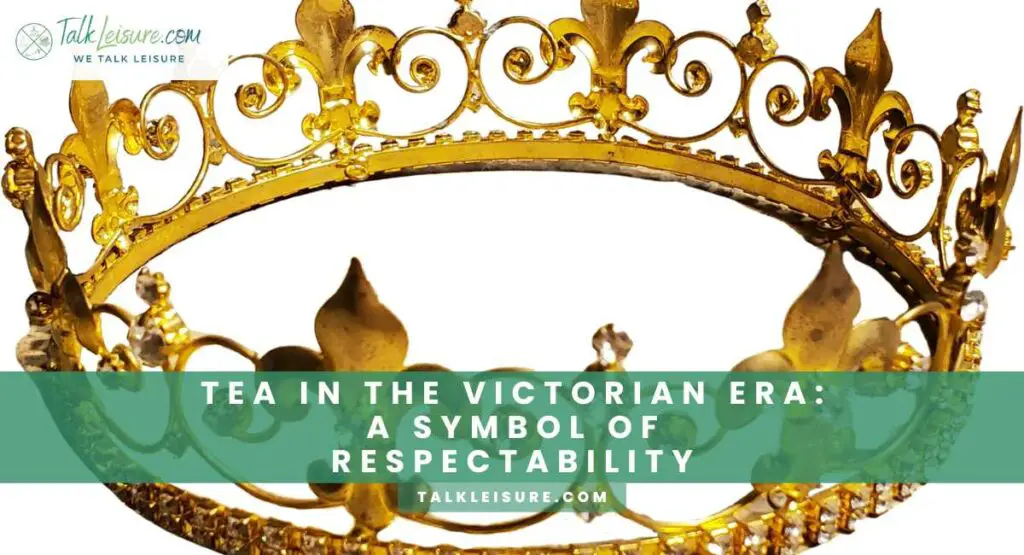
Greetings, fellow time-travelers, as we step into the refined parlors of 19th-century England, where tea became more than just a beverage—it became a symbol of social grace and respectability.
Picture this: The Victorian era was an age of decorum and strict societal norms. Tea, once a rare luxury, has now become a fixture of daily life for the British. It was served with meticulous precision, accompanied by dainty sandwiches, delicate pastries, and polite conversation.
Tea gatherings were a cornerstone of Victorian society. The afternoon tea ritual, championed by Anna, the Duchess of Bedford, became a fashionable way to bridge the gap between lunch and dinner. It was an opportunity for genteel ladies and gentlemen to come together, engage in polite discourse, and display their refinement.
The paraphernalia associated with tea-drinking became a status symbol. Elaborate teapots, fine bone china, and intricately designed tea sets adorned the tables of the upper classes. Etiquette books outline the proper way to brew and serve tea, solidifying its place as a hallmark of gentility.
But beneath this veneer of elegance lay a deeper significance. Tea became a means of asserting control in a rapidly changing world. It provided a sense of order and structure amidst the chaos of industrialization. In the bustle of factories and mills, the afternoon tea offered a sanctuary of civility.
As we gaze back at this period of history, we’re reminded that tea wasn’t just a beverage; it was a cultural touchstone. It was a reflection of societal aspirations and a respite from the challenges of a transforming world.
In our next segment, we’ll journey to the Land of the Rising Sun, where we’ll explore the profound cultural significance of the Japanese tea ceremony and its enduring impact on history. Stay tuned, and let’s continue our voyage through the influential world of tea!
The Japanese Tea Ceremony: Zen, Politics, and Tradition
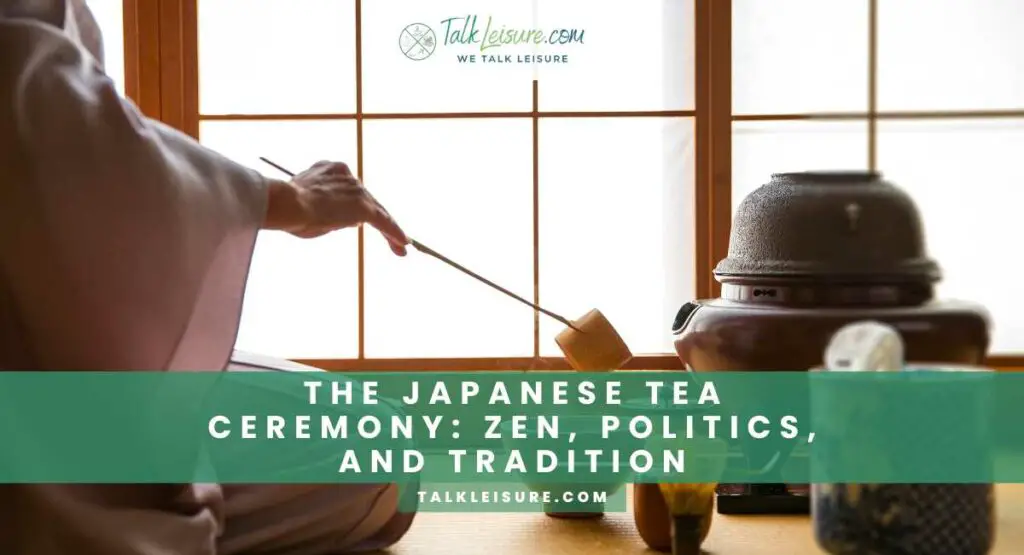
Greetings, fellow explorers of history and tea! Our voyage now takes us to the Land of the Rising Sun, where tea transcended mere refreshment and became a profound cultural practice—the Japanese tea ceremony.
Picture this: Japan is a country steeped in tradition and spiritual depth. Here, tea took on a new dimension, blending elements of Zen Buddhism, aesthetics, and social interaction. The tea ceremony, or “chanoyu,” became a cornerstone of Japanese culture, encapsulating principles of harmony, respect, and tranquility.
The tea ceremony wasn’t just a matter of brewing leaves; it was an art form, a spiritual discipline, and a means of forging connections. The preparation of tea leaves and the serving of tea were imbued with meticulous attention to detail. Each gesture, each movement, held significance, creating a choreographed ritual that transcended the ordinary.
At its core, the Japanese tea ceremony was an embodiment of Zen philosophy—an exercise in mindfulness, simplicity, and being present in the moment. It was a sanctuary from the complexities of the outside world, a place where inner peace could be found in a humble teahouse.
Yet, beyond its spiritual underpinnings, the tea ceremony held political and social significance. It was a space for leaders and intellectuals to convene, to discuss matters of state, and to build relationships. It became a tool of diplomacy and cultural exchange, influencing the course of Japanese history.
As we immerse ourselves in the world of chanoyu, we’re reminded that tea is more than a beverage; it’s a vessel for profound human experiences. It’s a bridge between the material and the spiritual, a testament to the power of ritual in shaping culture.
In our next segment, we’ll journey to the Indian subcontinent, where we’ll uncover how tea played a role in the struggle for independence and its enduring impact on the region. Stay tuned, and let’s continue our exploration of the intricate relationship between tea and history!
Tea and the Indian Independence Movement
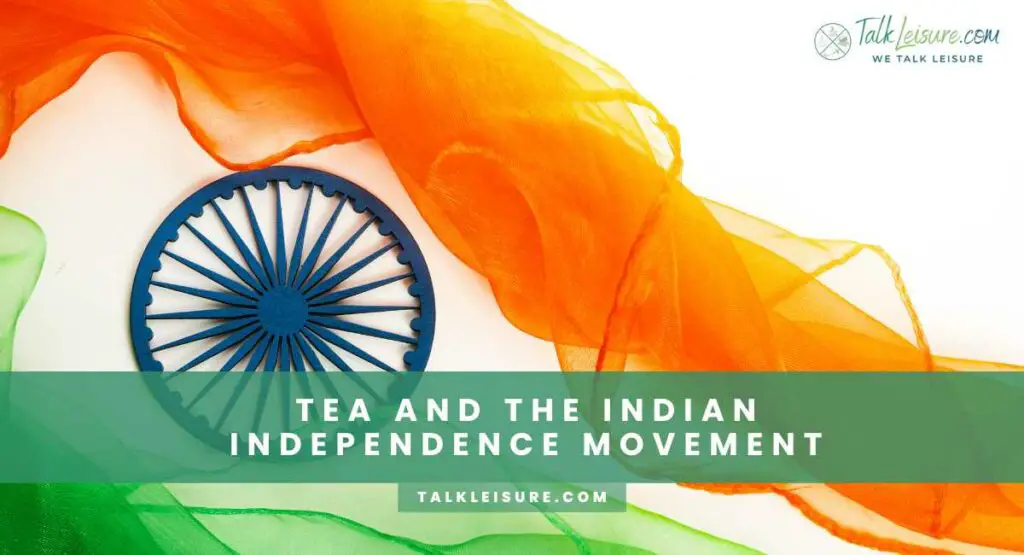
Greetings, fellow adventurers in history and tea! Our journey now takes us to the Indian subcontinent, where tea leaves played a pivotal role in the fight for independence.
Picture this: Colonial India, a land of rich diversity and simmering discontent. The British East India Company, recognizing the potential of India’s fertile soil, established vast tea plantations in Assam, Darjeeling, and other regions. What started as an economic venture would soon become a catalyst for change.
Tea estates became epicenters of cultural exchange and political discourse. They brought together laborers from various regions, fostering a sense of unity and shared purpose. It was amidst the verdant fields that the seeds of independence were sown.
Leaders like Mahatma Gandhi recognized the strategic importance of boycotting British goods, including tea, as a means of exerting economic pressure. The ‘Swadeshi Movement’ advocated for the use of indigenous products, and Indian-grown tea became a symbol of self-reliance and defiance.
Tea gatherings, once a bastion of colonial elite, transformed into forums for political mobilization. The ‘Tea Sessions’ held in cities and towns became platforms for impassioned speeches, where the aromatic brew fueled not just conversations, but the fires of revolution.
In 1947, as India gained its independence, the significance of tea in the struggle for freedom could not be ignored. The very leaves that had been cultivated by colonial powers were now symbols of resilience and the indomitable spirit of a nation.
As we reflect on this chapter, we’re reminded that even the humblest of commodities can carry the weight of history. The story of tea in India is a testament to the power of collective action and the ability of a nation to reclaim its destiny.
In our next segment, we’ll journey to the modern era, exploring how tea continues to shape our globalized world. Stay tuned, and let’s continue our exploration of the remarkable ways in which tea has influenced major historical events!
Tea in Modern Times: Globalization and Innovation

Greetings, fellow time-travelers and tea enthusiasts! As we approach the present day, let’s explore how tea continues to shape our world in an era of globalization and innovation.
Picture this: The 21st century, a time of unprecedented connectivity and cultural exchange. Tea, once bound by geographical borders, now transcends continents and time zones. It’s not just about the classic black and green varieties anymore; we’ve witnessed an explosion of flavors, blends, and brewing techniques.
Tea has become more than a beverage; it’s a lifestyle, a wellness ritual, and a form of self-expression. Matcha lattes, herbal infusions, and chai latte art have become staples of coffee shops and tea houses alike. The diversity of options reflects the myriad ways tea has adapted to meet the tastes and needs of a global audience.
In the digital age, tea has found a new platform for its story. From blogs and social media to YouTube channels and online forums, tea enthusiasts from every corner of the globe come together to share their passion, knowledge, and discoveries. The online tea community has become a hub for education and exploration.
Moreover, the tea industry itself has undergone a renaissance. From sustainable farming practices to ethical sourcing, there’s a growing awareness of the environmental and social impact of tea production. Artisans and farmers are experimenting with new cultivation methods, yielding unique and high-quality teas that push the boundaries of tradition.
As we savor our contemporary cuppas, we’re reminded that tea’s influence on history is an ongoing tale. It’s a testament to the adaptability of this humble leaf, and its ability to evolve with the times.
In our final segment, we’ll wrap up our journey, reflecting on the enduring legacy of tea and its continued relevance in our fast-paced, interconnected world. Stay tuned, and let’s raise our virtual teacups to the remarkable journey of tea through the annals of history!
High Tea Culture: Elegance and Tradition
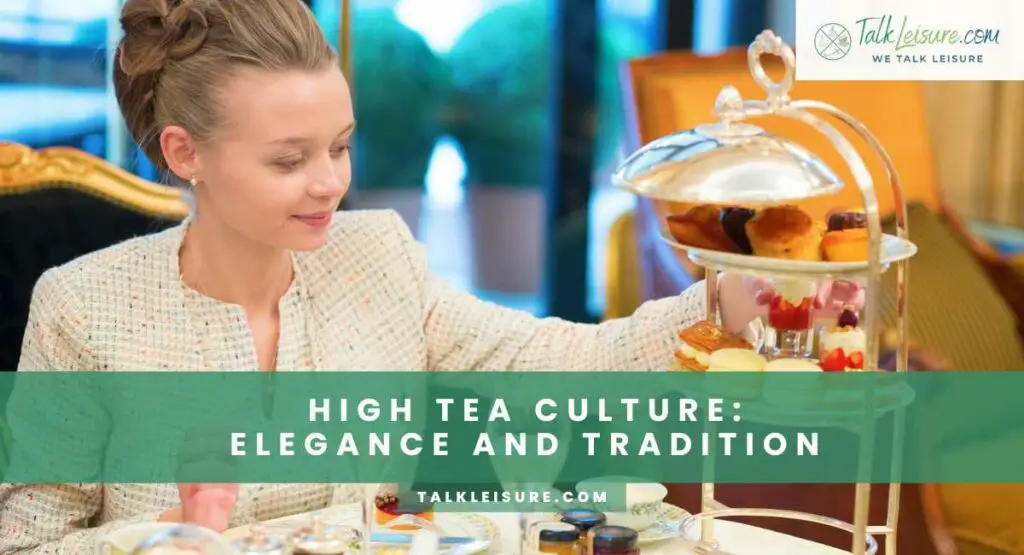
Greetings, connoisseurs of history and tea! As we near the end of our journey, let’s delve into the refined world of high tea—a tradition that has left an indelible mark on the tapestry of tea culture.
Picture this: 19th-century Britain, an era of opulence and societal stratification. High tea emerged as a distinguished ritual, blending the elegance of afternoon tea with heartier fare. Unlike its more delicate counterpart, high tea was a substantial affair, often served later in the day.
In grand parlors and lavish estates, tables were adorned with an array of delicacies—warm scones, savory finger sandwiches, and an assortment of decadent pastries. The tea, typically robust, was accompanied by milk and sugar, catering to various tastes.
High tea was not just a matter of sustenance; it was a social event, a display of refinement, and an opportunity for the upper classes to showcase their sophistication. It was a ritual that spoke of leisure, luxury, and a commitment to tradition.
Beyond Britain, high tea found its way into various corners of the globe, each region adding its unique touch. In Australia, the tradition evolved to include meat pies and other local specialties. In India, the British influence on high tea is still visible in select establishments.
Today, high tea continues to be a cherished practice in many parts of the world. It’s an occasion to gather with loved ones, to celebrate special moments, and to indulge in a bit of extravagance. Whether in upscale hotels, charming tearooms, or even in the comfort of one’s home, high tea preserves the spirit of refined indulgence.
As we sip our tea and savor delicate pastries, we’re reminded that high tea is not just a meal; it’s a celebration of culture, history, and the enduring appeal of this beloved beverage.
Conclusion
As we bid farewell to this odyssey through tea’s historical tapestry, we find ourselves awestruck by its profound influence. From ancient Silk Road caravans to modern globalized rituals, tea’s journey mirrors our own evolution. It’s been a currency of cultures, a catalyst for conversations, and a symbol of resistance.
The legacy of tea is one of resilience, adaptability, and unifying power. As we raise our virtual teacups in a final toast, let’s honor this humble leaf that has left an indelible mark on our shared history. May its story continue to inspire, bringing warmth, connection, and contemplation to generations yet to come. Cheers to the enduring legacy of tea!
Frequently Asked Questions
- How does tea impact the world today?
Tea remains a global staple, consumed by billions for its diverse flavors and potential health benefits. It supports economies, providing livelihoods for millions in cultivation and trade. Furthermore, its cultural significance fosters social connections and traditions worldwide, making it a beverage that continues to unite people across continents and generations.€
- How did tea change English society?
Tea revolutionized English society, introducing a new social ritual. The afternoon tea ceremony became a symbol of refinement and an avenue for genteel gatherings. It reshaped social interactions, offering a platform for conversation and cultural exchange. Additionally, it influenced material culture, with elaborate teapots and fine china becoming status symbols, leaving an enduring mark on English society.
- Why is tea sacred?
Tea is considered sacred in many cultures due to its deep-rooted historical, cultural, and spiritual significance. Its preparation and consumption often involve rituals that foster mindfulness, meditation, and community. Additionally, tea’s natural properties and association with healing have contributed to its revered status, making it more than a beverage—it’s a conduit for reflection and connection with the divine.






